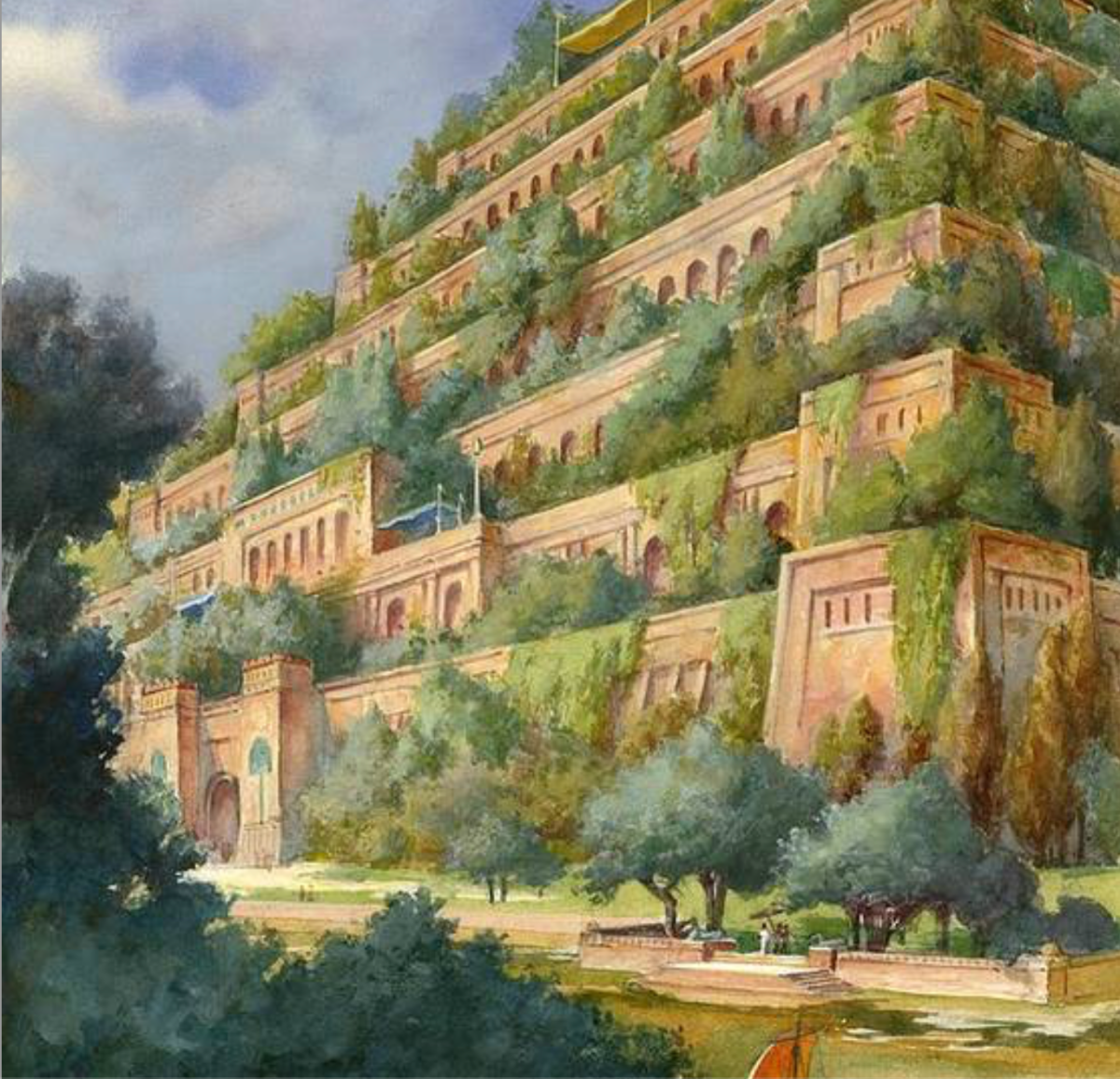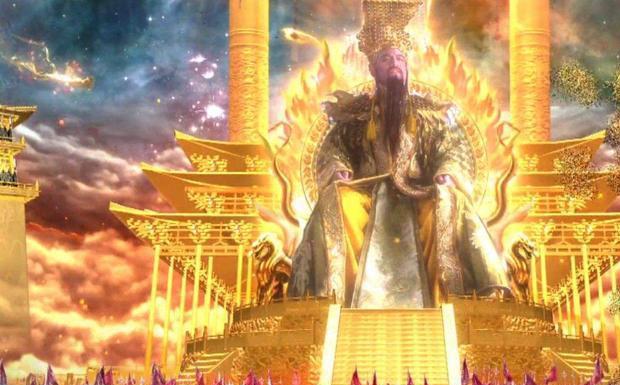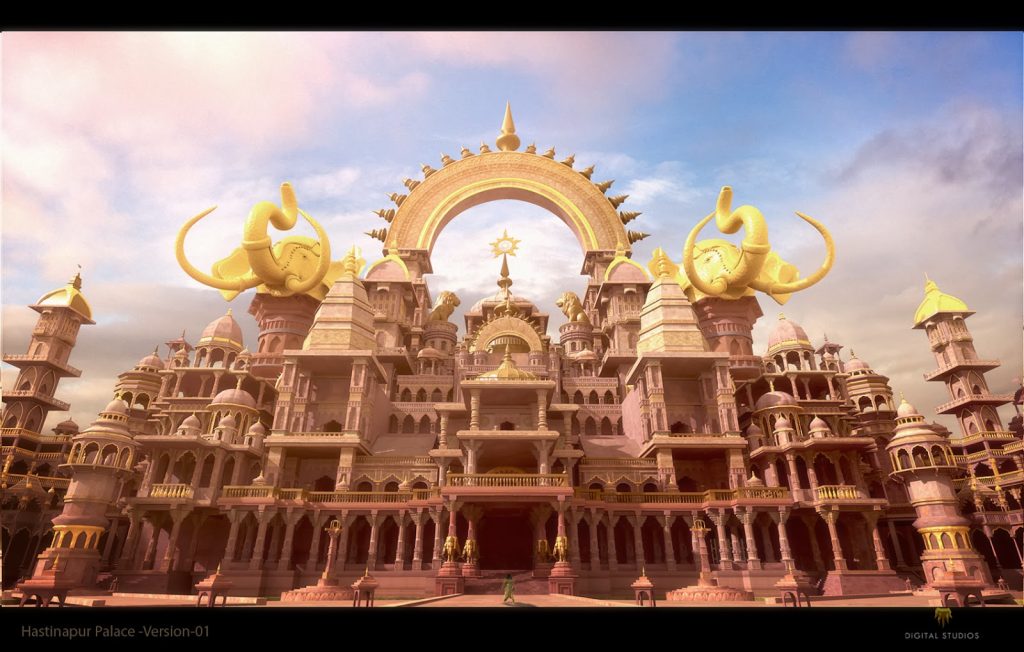Mythology has produced a vast repository of architectural wonders throughout history, each infused with deep cultural importance and symbolism. These legendary constructions, which are frequently portrayed as opulent mansions, temples, or strongholds, are real-life examples of both divine and human creativity. These architectural marvels, which range from the celestial homes of gods to the intricate labyrinths of ancient civilisations, fascinate the imagination and provide insights into the values, beliefs, and aspirations of many cultures throughout history. These wonders never cease to astound us with their enduring presence in myth and legend. In this article, we shall see a few of those architectural structures that have existed in Indian and Wordly mythologies.
1. Valhalla (Norse Mythology)
Valhalla is a hall of the slain which is located in Asgard which is the region with the Norse Gods. It is where those who died in combat are taken by the Valkyries. It is regarded as one of the most famous buildings/fortress ever built in ancient Asgard. The structure was apparently built to incorporate thousands of souls with over 540 doors to end its pavilion. It’s ceilings were believed to be covered in golden shields and rafters were made of spears and different breastplates are used to make its benches. The grounds in Valhalla are covered with Glasir trees and that of Laeradr. The structure has influenced actual architectural built structures such as teh Walhalla temple built by Leo Von Klenze for Ludwig I of Bavaria between 1830-1847.

2. The Hanging Gardens of Babylon (Babylonian Mythology)
It is considered one of the Seven Wonders of the Ancient World by the Hellenic culture. According to legends, the garden was built with a palace called the Marvel of Mankind by Neo-Babylonian king for his median wife because she missed the green hills and valleys of her homeland. The building of the gardens apparently required sophisticated engineering and designing as the space was designed for cultivation of food.

3. The Crystal Cave (Arthurian Legend)
The Crystal Cave, a central element in Mary Stewart’s Arthurian novel, serves as a mystical sanctuary hidden within Britain’s forests. Within its depths, Merlin, the legendary wizard, discovers his magical abilities and begins to unravel the mysteries of his fate. Through prophetic visions and the use of a reflective crystal pool, Merlin gains insights into the future and his pivotal role in shaping the destiny of King Arthur and Camelot. Symbolising both Merlin’s mystical connection to the natural world and his introspective journey, the Crystal Cave embodies the essence of magic and destiny in the Arthurian legend, playing a crucial role in the development of one of its most iconic characters.

4.Palace of Hastinapur (Hindu Mythology)
All Indians are aware of the capital city of the Kuru Kingdom called Hastinapur, which plays a crucial role in the Indian epic Mahabharata. The palace of Hastinapur is where much of the epic’s events take place.The city is believed to be washed away from Ganga river, historians and archaeologists believe it lies between Meerut and Mawana region of Uttar Pradesh.Further excavations show that many utensils, brick-lined roads, drainage systems and other kitchens and ghats have been found in the region.

5. City of Dwarka (Hindu Mythology)
Krishna’s kingdom Dwarka is a great utopian city that found its mention in my Indian scriptures.It is filled with opulent architectural structures and gardens and lakes and had over 9 lakh royal palaces. It is an architectural structure of mythologies which had residential complexes for Krishna’s wives inlaid with many precious stones and decorated with decorated pillars.
6. Sudharma Sabha
Sudharma Sabha, also known as Sudharma Palace, is a divine assembly hall mentioned in Hindu scriptures such as the Mahabharata and the Puranas. In Hindu mythology and scriptures, Sudharma Sabha is often described as a celestial assembly rather than a physical location on Earth. It is portrayed as a divine gathering place, typically located in the heavenly realms or higher planes of existence. Sudharma Sabha is said to be presided over by deities, sages, or other enlightened beings who embody righteousness and wisdom. While it is not situated in any specific earthly location, its significance lies in its representation of the ideal assembly where righteous principles and spiritual truths are upheld and discussed.
7. Palace of the Jade Emperor
In Chinese mythology, the Palace of the Jade Emperor is a celestial masterpiece that serves as the primary seat of power in the sky. Its building combines celestial symbolism with traditional Chinese design, and it is built from glittering jade and celestial pearls. The Jade Emperor rules over a celestial court in its sacred chambers, where angelic beings congregate to exchange counsel and settle conflicts. Encircling the throne room are rooms devoted to different facets of life on heaven, such as keeping a record of human acts or creating heavenly goods. The palace is a celestial beacon that guides souls through space and radiates majesty and grandeur as a symbol of divine justice and order.

8. Mount Olympus
Inspired by the majesty of Mount Olympus, the mythical home of the gods in Greek mythology, Olympus Mons is adored as the highest volcano and peak on Mars in Roman mythology. Its imposing grandeur inspires amazement and awe as it rises majestically over the Martian terrain. Olympus Mons is described in legends as a sacred location where celestial beings and Martian deities reside. Legends from antiquity describe its slopes as being covered in celestial palaces and gardens where gods and goddesses live in splendour and majesty, but its architectural features remain a mystery. Its mythological significance as a bridge between worlds is demonstrated by the rumoured ability to see the glories of the cosmos and hear the echoes of celestial music from its peak.
9.The Tower of Babel (Judeo-Christian Mythology)
The Tower of Babel is a well-known story from Judeo-Christian mythology, appearing in the Book of Genesis in the Hebrew Bible (Old Testament). According to the narrative, after the Great Flood, humanity was unified and spoke a common language. They decided to build a city with a tower that reached the heavens as a symbol of their unity and strength. However, God, seeing their hubris and fearing their potential to accomplish anything they set their minds to, decided to confound their language. As a result, people were no longer able to understand one another, and they were scattered across the earth. The tower was left unfinished, giving rise to the diverse languages and cultures of humanity. The story of the Tower of Babel is often interpreted as a cautionary tale about the dangers of pride, the consequences of human ambition, and the importance of humility before the divine. It has been a subject of interpretation and inspiration in various religious, literary, and artistic traditions throughout history.

10. House of Lacquer
The Pandavas briefly lived in Varnavrat, a large town surrounded by a thick forest, and barely avoided being assassinated in the flaming city of Lakshagraha, according to the epic. Purochana painstakingly planned and built the palace at Lakshagraha, also called the House of Lacquer, using extremely combustible materials to create a lethal trap. According to the story, the Pandavas were able to escape through underground passages and emerge close to the Ganga river’s banks. Varnavrat is identified by historians and archaeologists with the present-day Barnava village in the Baghpat district, which lies in Baghpat.
References:
https://www.re-thinkingthefuture.com/case-studies/a4742-the-hanging-gardens-of-babylon-ancient-paradise-for-the-living/
https://www.re-thinkingthefuture.com/history-of-architecture/a3627-architecture-in-mythology-architecture-as-described-in-the-mahabharata/
https://mythopedia.com/topics/valhalla
https://www.nationalgeographic.com/history/article/giza-pyramids#:~:text=Egypt’s%20pharaohs%20expected%20to%20become,himself%20in%20the%20next%20world.






